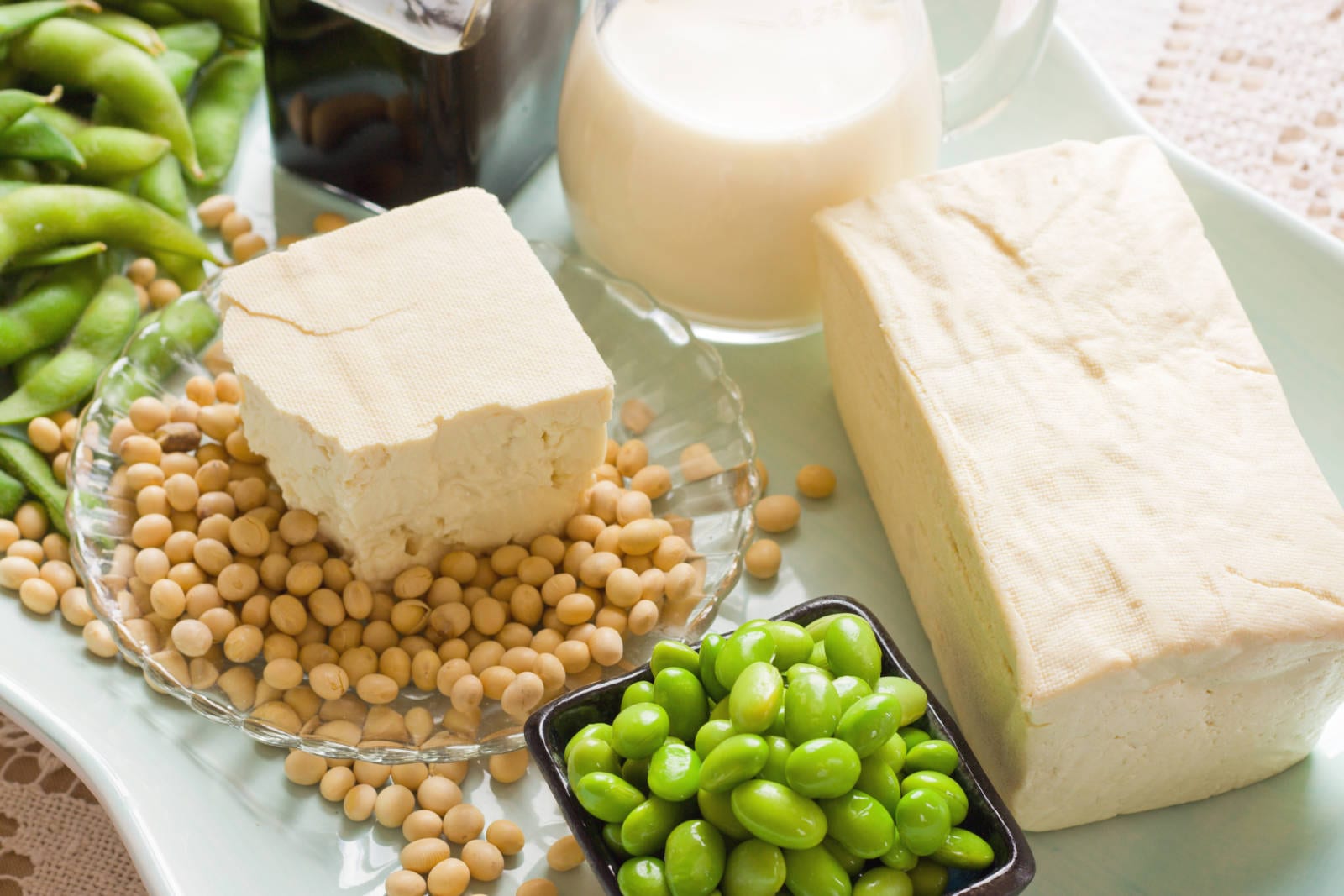The U.S. Soybean Export Council (USSEC) shares information about global developments and trends that create a demand for U.S.-grown soybeans.
In this era of social distancing and pantry stocking, soyfoods are not only a high-quality plant protein, but they also provide shelf-stable options for global consumers. According to the Chicago-based U.S. research firm Information Resources, Inc. (I.R.I.), consumer spending shifts in response to the COVID-19 pandemic are likely to lead to a greater interest in buying shelf-stable foods and stocking up on meal components.[1] The United Soybean Board’s global initiative, “Choose U.S. Protein First,” emphasizes that U.S. proteins —either animal proteins or versatile soyfoods—can help meet today’s world nutrition needs and cultural preferences.
Shelf Stable Soyfoods for Global Cuisines
Soy is a highly versatile ingredient that complements world cuisines. It supplies cholesterol-free plant protein that has all of the essential amino acids in the amounts required to meet the nutritional needs of children and adults.[2] The following examples demonstrate the range of shelf-stable soyfoods available to consumers.
Soyfoods for North Asian pantries
Masako (Masi) Tateishi, USSEC’s Director for Human Utilization in Japan, says, “Many companies in Japan are trying to provide more choices for consumers of diverse cultural backgrounds, and from foreign countries. Soyfoods are perfect for that.” She gives examples of soyfoods for the pantry: “Soy snacks [including energy bars, rice, and soy crackers, soy nuts] have a long shelf life. Also, aseptic packaged tofu has a shelf life of six months, or longer.” Tateishi suggests other shelf-stable foods such as okara (the high protein/high fiber byproduct of tofu-making), freeze-dried tofu and natto, powdered miso, and soy pasta.
According to Jisook Chung, USSEC’s Korea Marketing Director, South Korea is the second-largest market for U.S. food bean exports. Shelf-stable soy ingredients available to consumers there include miso and soy sauce, as well as Tetra Pak soymilk.
Storable soyfoods for Southeast Asian consumers
Boon Yee Yeong serves as the Singapore-based Senior Technical Consultant and Human Utilization Lead for USSEC’s Southeast Asia region. She notes that soymilk, textured soy protein (TSP), and soy flour, and especially snacks, cereals, biscuits, and protein supplements, are among the shelf-stable soyfoods choices.
Soy staples in the Asia Subcontinent Region
TSP/TVP (textured soy protein, also known as textured vegetable protein) is a popular soyfood in India.
Made of defatted soy flour, shelf-stable TSP is both high protein and high fiber. It is an adaptable ingredient for blending with meats, combining with cereals, or adding to baked goods. In the U.S., TSP is often blended half-and-half with hamburger, incorporated into chili or other one-bowl meals, and added to cereals such as oatmeal for a protein boost. Global research firm Allied Market Research reports that the worldwide TSP market is expected to experience a CAGR of 8.7 percent from 2019 to 2026.[3]
U.S.-grown soy offers the following amounts of protein: one-quarter cup of roasted salted soynuts, 10 grams of protein; textured vegetable protein, 8.75 grams of protein per ¼ cup; unsweetened soymilk, 7 grams protein per one cup; silken tofu, 5.8 grams of protein per 84 grams; and extra-firm water-packed tofu, 8 grams of protein for 85 grams, or 3 ounces. [4]
References:
[1] Information Resources, Inc. (IRI), “COVID-19 and the Economy,” 2020, March 25; p. 9.
[2] Hughes GJ, Ryan DJ, Mukherjea R, Schasteen CS. “Protein Digestibility-Corrected Amino Acid Scores (PDCAAS) for Soy Protein Isolates and Concentrate: Criteria for Evaluation.” Journal of Agriculture and Food Chemistry. 2011 December 14;59(23):12707-12. https://www.ncbi.nlm.nih.gov/pubmed/22017752.
[3] Allied Market Research, “Textured Soy Protein Market Outlook—2026.” www.alliedmarketresearch.com/textured-soy-protein-market
[4] US Department of Agriculture, Agricultural Research Service. 2016. Nutrient Data Laboratory. USDA National Nutrient Database for Standard Reference.
